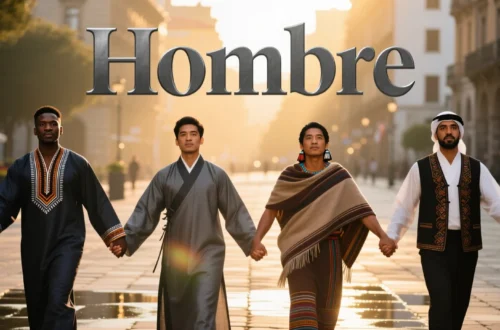As a child, I marveled at the tiny ladybug crawling on my hand, and my grandmother called it “pequeña” in Spanish, a word that felt as delicate as the creature itself. The term for “little” carries a universal charm, evoking tenderness, modesty, or wonder, yet it shifts beautifully across languages and cultures.
Whether it’s whispered about a small gift in a Seoul shop or a young sibling in a Nairobi market, “little” reflects a shared human appreciation for the small things, shaped by each culture’s unique lens.
Let’s embark on a global journey to explore how people express “little” and what these words reveal about their societies.
Reference Table: “Little” in Different Languages
| Language | Word/Phrase | Cultural/Linguistic Insight |
|---|---|---|
| French | Petit | Used for small objects or endearment, e.g., “petit trésor” (little treasure). |
| Spanish | Pequeño | Conveys smallness with warmth, often used for children or pets. |
| Italian | Piccolo | Evokes affection, as in “piccolo amore” (little love). |
| German | Klein | Straightforward term for small size, used in everyday contexts. |
| Mandarin | Xiǎo (小) | Means “small” or “young,” used affectionately for children or things. |
| Hindi | Chhota | Suggests smallness with a playful tone, common for kids or objects. |
| Japanese | Chiisai (小さい) | Used for small things or to express cuteness, tied to kawaii culture. |
| Korean | Jageun (작은) | Denotes small size, often used tenderly for younger people. |
| Arabic | Saghir (صغير) | Means “small” or “young,” used across 20+ countries with warmth. |
| Swahili | Kidogo | Versatile term for “little” or “few,” common in East Africa. |
| Zulu | Ncane | Means “small,” often used affectionately in South Africa. |
| Yoruba | Kekere | Conveys smallness or youth, used warmly in Nigeria. |
| Maori | Iti | Means “small,” reflecting simplicity in New Zealand’s culture. |
| Hawaiian | Liʻiliʻi | Evokes delicate smallness, tied to the aloha spirit. |
| Cherokee | Usdi | Used for small things or young people, with a sense of care. |
European Languages: Smallness with Heart
European languages express “little” with terms that blend precision and affection. For example, in French, “petit” is used for small objects or as an endearment, like “petit cœur” (little heart), heard in Parisian cafés. Meanwhile, Spanish uses “pequeño,” a warm term for children or tiny treasures, often spoken with a smile in Spain’s markets. Additionally, Italian’s “piccolo” carries a poetic charm, as in “piccolo sogno” (little dream), reflecting Italy’s love for expressive language. In German, “klein” is straightforward, used for anything small, from a “kleines Haus” (little house) to a child, showing Germany’s practical approach. Thus, these terms balance tenderness and clarity, mirroring Europe’s cultural diversity.
Asian Languages: Smallness as Endearment
Asia’s linguistic diversity shapes unique expressions of “little,” often tied to affection or youth. For instance, in Mandarin, “xiǎo” (small) is used for young people or objects, like “xiǎo māo” (little cat), reflecting China’s warmth toward the young. In Hindi, “chhota” suggests smallness with a playful tone, used in India for kids or small items like “chhota khilona” (little toy). Similarly, Japanese’s “chiisai” conveys smallness or cuteness, tied to kawaii culture, as in “chiisai inu” (little dog). In Korean, “jageun” denotes small size, often used tenderly for younger siblings, reflecting emotional closeness. Finally, Arabic’s “saghir,” used in over 20 countries like Egypt and Iraq, carries warmth, as in “saghir jiddan” (very little), rooted in poetic traditions. These terms highlight Asia’s range, from playful to deeply affectionate expressions.
African Languages: Smallness in Community
In African languages, “little” often reflects community and warmth. For example, Swahili, spoken in over 20 countries like Kenya and Tanzania, uses “kidogo” for “little” or “few,” as in “kidogo chakula” (little food), heard in bustling markets. In Zulu, “ncane” means “small,” used affectionately in South Africa for children or small gifts, often with a smile. Similarly, Yoruba’s “kekere” in Nigeria conveys smallness or youth, as in “omo kekere” (little child), reflecting communal care. These terms, used across diverse African settings, emphasize shared affection and positivity, often celebrated in social gatherings.
Indigenous & Island Languages: Simplicity in Smallness
Indigenous and island languages express “little” with simplicity and care. For instance, Maori in New Zealand uses “iti” (small), as in “tamaiti iti” (little child), reflecting cultural harmony. In Hawaiian, “liʻiliʻi” evokes delicate smallness, used for tiny objects or young people, tied to aloha’s warmth. Similarly, Cherokee’s “usdi” signifies small things or youth, used in Native American communities with care, as in “usdi yona” (little bear). In Samoan, “laʻitiiti” (small) is used in Pacific settings for small objects or children, reflecting communal bonds. Across these cultures, from New Zealand to the Cherokee Nation, “little” emphasizes tenderness and unity, often tied to traditions.
Cultural Insights: The Evolution of Smallness
Words for “little” have evolved with cultural values. For instance, Latin’s “parvus” (small) influenced Romance languages like French and Spanish, carrying affection into modern terms. In Arabic, “saghir” traces back to classical texts, symbolizing youth or modesty. Moreover, in African languages like Swahili, “kidogo” reflects trade-era simplicity, emphasizing minimalism. In Asia, terms like “xiǎo” and “chiisai” align with cultural reverence for youth and cuteness, shaped by philosophy and art. These words carry histories of language contact, from Roman influence in Europe to Arabic trade routes in Africa, uniting people through a shared appreciation for the small.
Proverbs and Sayings: Wisdom of Smallness
- French: “Les petits ruisseaux font les grandes rivières.” (Little streams make great rivers.) – Highlights the power of small things.
- Hindi: “Chhota muh, badi baat.” (Little mouth, big words.) – Reflects the impact of small voices.
- Swahili: “Kidogo kidogo hujaza kibaba.” (Little by little fills the pot.) – Emphasizes gradual progress.
- Japanese: “Chiisai koto kara ookina yume.” (From small things, big dreams.) – Ties smallness to potential.
- Yoruba: “Kekere ni o n’jẹun.” (The little one eats slowly.) – Suggests patience in smallness.
FAQs
Why do some words for “little” sound similar?
Shared linguistic roots, like Latin’s influence on French and Spanish, or Arabic’s impact on Swahili, create similarities across languages.
What’s the oldest term for “little”?
Latin’s “parvus” (circa 1st century BCE) is among the earliest, influencing modern Romance language terms.
How do cultures shape the term’s use?
Collectivist cultures (e.g., African, Indigenous) use “little” to express communal care, while individualistic cultures (e.g., European) focus on affection or precision.
Conclusion
From “pequeño” in Spain to “kidogo” in Tanzania, the word for “little” weaves a global thread of tenderness and wonder. Each term, whether the playful “chhota” in Hindi or the warm “iti” in Maori, reflects cultural values while celebrating our shared love for the small. Consequently, these words remind us that smallness unites all people, sparking joy across cultures. How do you say “little” in your language, and what small thing brings you joy? Share your thoughts below—we’d love to hear your story!






